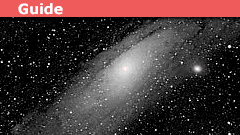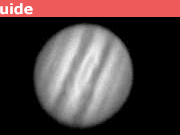Introduction to Astrophotography for Beginners
Click for complete series
For this Insight series (3 total), I assume that either you are using a camera (with an attached lens) or you already know how to attach your camera to your telescope. If you have a telescope and want to buy a camera, see the ‘camera buyer’s guide’ insights. If you have a camera and want to buy a telescope, see the ‘telescope buyer’s guide’ insight. And as always, many PF members with considerable expertise are happy to provide advice and help.
Astrophotography is an imaging method that primarily requires long-time exposures. How long? As long as possible! The ability to create long-time exposures has become greatly simplified with the introduction of digital image processing methods, primarily image stacking. Modern commercial photographic sensors have now progressed to the point where digital outperforms film. Modern smartphone cameras perform as well as 6-year old DSLRs, placing high-performance imaging tools in the hands of nearly everyone. Advanced post-processing methods, in combination with high-performance image sensors, have made the ability to create images of deep-sky objects, normally invisible to the naked eye, routine. Modern imaging technology is sufficient to let anyone explore what happens when the camera is pointed up, rather than down.
Astrophotography is just like daytime photography in that the most important piece of equipment is *you*. (Almost) any camera you have on hand is sufficient to acquire images of night sky objects. Your results primarily depend on your willingness to spend the time and effort required to improve. The universe is yours to discover!
Even so, there are some key differences (besides the specialized equipment). Objects in the night sky are highly stable, radiometrically and spectroscopically quantified, and behave predictably. Consequently, there are objective metrics available to compare your image with ‘reality’. Astrophotography primarily images point sources of light- your image is your ‘point spread function’ writ large. Every flaw in both your equipment and technique is immediately apparent, which can be frustrating.
Another difference is that post-processing is as equally important as correct exposure to astronomical image-making: you will need to master *both* imaging and post-processing technical skills.
A final key difference is that in contrast to daytime photography, in astrophotography every photon is precious. Optimal results require fast (faster than f/4) lenses. Yes, astrophotography can be done with any lens, but if you want to image galaxies and nebulas, you need the right tools.
This Insight is structured into three parts: the first is aimed at the rank beginner, the second at the more experienced photographer, and the last at those interested in deep-sky astrophotography and astrometry.
One final tip- because image stacking lets you combine images acquired on different days (and potentially, years), it can be helpful to keep a log of your ‘optimal’ camera settings. I hope that the information I provide here can help you master the basics in much less time than I required.
Some useful websites:
http://www.astropix.com/HTML/I_ASTROP/toc_ap.html
http://www.themcdonalds.net/richard/index.php?title=Basics_of_Astrophotography
http://www.clarkvision.com/articles/index.html
Table of Contents
Astrophotography for Beginners
“All I have is my smartphone or basic point-and-shoot camera.”
Good news- that’s all you need! Bad news- all you can photograph is the moon, visible planets (Venus, Mars, Jupiter, Saturn), and the sun.
Don’t try to photograph the sun
Even so, you may have difficulty focusing and properly setting the exposure- the camera may even refuse to take the photo. If there are settings to focus on and expose a small subregion of the frame, use that feature and center the region on the moon or planet. You will find that using maximum zoom is difficult- slight movements are greatly amplified and the optical throughput drops significantly, resulting in noisy images. There are tripod-type attachments for smartphones, and a small tripod would be helpful. If you already have a telescope, it is fairly simple to attach most cameras and proceed from there.
Essential post-processing step: image stacking
The term ‘image stack’ is very generic, it can be thought of as assembling a 3-dimensional ‘cube’ from a series of 2-dimensional images. The individual images can form a series of single-wavelength (spectroscopic) images (hyperspectral imaging), a time series of images (timelapse), a series of images taken at different object distances (typical in confocal microscopy), a series of images acquired under near-identical conditions, or any other parameter you choose to vary. In the context of Astrophotography ‘image stacking’ is generally a technique that averages many noisy (low signal-to-noise ratio, SNR) ‘identical’ images to produce a single high SNR image. There are many stacking programs available, some are free. Image stacking programs sometimes distinguish between images of stars and extended objects (the moon, planets), and a single program may not be able to handle both classes of objects. A nice benefit of many smartphone cameras (and webcams!) is the ability to capture video this means you can capture several hundred individual images very quickly, giving your stacking program enough frames to produce a very good final result.
Useful knowledge: Apparent magnitude
Apparent magnitude is a logarithmic brightness scale for celestial objects and is simply how bright they are relative to a standard object. Understanding apparent magnitude helps set exposure and understand the ‘dynamic range’ of the starfield you are imaging. It is important to note that while apparent magnitudes, dynamic range, and SNR are logarithmic intensity scales, the output signal from your camera sensor scales linearly with intensity. This distinction becomes important for more advanced image processing steps when you need to compress high dynamic range scenes into an 8-bit format. Also, note that there are several different magnitude scales:
http://www.sdss.org/dr12/algorithms/magnitudes/
Useful exercise: night photography
To get a better sense of focusing and exposure with low light levels, it can be helpful to practice photographing night-time clouds.
PhD Physics – Associate Professor
Department of Physics, Cleveland State University







Great start to your series, I can't wait to read the other installments. :thumbup: